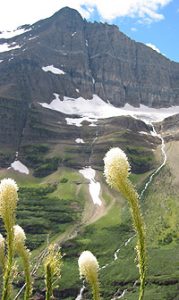Global Warming: Places to visit
 Leave your dream, such as diving on the Great Barrier Reef, skiing in the Swiss Alps – can always remain a dream, if you do not hurry, writes McClatchy News Service. Magic coral reefs near the Australian coast may disappear from the face of the earth by 2050, according to the Intergovernmental Panel on Climate Change. And the rise in temperature in the Alps is forcing tour operators to use more and more equipment to create snow.
Leave your dream, such as diving on the Great Barrier Reef, skiing in the Swiss Alps – can always remain a dream, if you do not hurry, writes McClatchy News Service. Magic coral reefs near the Australian coast may disappear from the face of the earth by 2050, according to the Intergovernmental Panel on Climate Change. And the rise in temperature in the Alps is forcing tour operators to use more and more equipment to create snow.
Global warming is progressing and more and more ecotourists are rushing to those parts of the world that were previously ignored, such as the poles of the Earth and other remote regions. Such sights can be called climatic, something like a farewell to the “best hits” of the Earth. We offer you a short list of places that, according to scientists, global warming may affect in the first place.
Glacier National Park in Montana, USA
According to scientists, glaciers may disappear by 2030. They say that soon it is even planned to change the name of the Park to, say, the Memorial National Park “Glacier”. This Park is the most important national climate change study center. Photographs from 1900 show a decrease in the size of the glacier, record temperatures were also observed in summer, record snowfalls in winter. You can admire the spectacle yourself online. Glacier National Park occupies more than 400 thousand hectares from the northern part of the Rocky Mountains and is famous for its stunning scenery. In this park there are elevations from 975 m along the Flethead River and the real mountain peaks, reaching 3000m. In addition to 4 dozen glaciers, in whose honor the park is named, and the ancient limestone cliffs there are lakes, waterfalls and many animals, such as moose, wolves and bears.
Alaska, United States
Most glaciers in Alaska also shrink in size. Over the past summer, Alaska has been visited by more than 1.7 million tourists, which is 3 percent more than in the previous year. Now Alaska began to engage in rafting and scuba diving, which had never happened before.
Everglades National Park, Florida, USA
Scientists say that sea levels are expected to rise, as well as more tropical storms, which is very bad for Florida. Everglades has a very fragile nature and is often discussed in the context of global climate change.
Polar region
There is no doubt that the earth’s poles are changing at a tremendous rate – the Greenland glaciers melt faster than expected. After a hundred years, the entire Arctic Ocean may simply be open waters. Lack of ocean ice can be a big problem for polar bears, and for us too. In Antarctica, some penguin species are dying out for the same reason, but the question of whether the temperature increase is a result of human activity has not yet been resolved. Travels to Norway, Greenland and Antarctica are becoming increasingly popular. The number of expeditions in the Arctic and Antarctic is constantly growing.
Lowland islands
Perhaps the smallest, endangered island is Tuvalu Island. It is quite difficult to get there, first to Fiji, and only then to Tuvalu. Here, for example, great scuba diving with a snorkel.
Maldives, low-lying atolls in the Indian Ocean, are also very often mentioned in the context of global warming.
Great Barrier Reef
Warmer ocean waters mean a disaster for corals. This is not news for those who regularly diving or snorkeling. The Great Barrier Reef is the largest and can disappear in a few decades.
Alps
In the Swiss Alps, every year less snow falls every year. Ski resorts and landscapes of the Alps change very soon. With higher temperatures, a certain type of mosquito is possible, based on the climate and tourism reports of the Wildlife Fund. Many tour operators who cannot afford the equipment for the production of snow, close their business.




